Chris Hedges's Blog, page 375
December 31, 2018
N. Korea’s Kim Offers an Olive Branch and a Warning for 2019
SEOUL, South Korea — North Korean leader Kim Jong Un said Tuesday he hopes to extend his high-stakes nuclear summitry with President Donald Trump into 2019, but also warned Washington not to test North Koreans’ patience with sanctions and pressure.
During his televised New Year’s speech, Kim said he’s ready to meet with Trump at any time to produce an outcome “welcomed by the international community.” However, he said the North will be forced to take a different path if the United States “continues to break its promises and misjudges the patience of our people by unilaterally demanding certain things and pushes ahead with sanctions and pressure.”
Kim also said the United States should continue to halt its joint military exercises with ally South Korea and not deploy strategic military assets to the South. He also made a nationalistic call urging for stronger inter-Korean cooperation and said the North is ready to resume operations at a jointly run factory park in the North Korean border town of Kaesong and restart South Korean tours to the North’s Diamond Mountain resort. Neither of those is possible for South Korea unless sanctions are removed.
Some analysts say North Korea has been trying to drive a wedge between Washington and Seoul while putting the larger burden of action on the United States. Pyongyang over the past months has accused Washington of failing to take corresponding measures following the North’s unilateral dismantlement of a nuclear testing ground and suspension of nuclear and long-range missile tests.
Washington and Pyongyang are trying to arrange a second summit between Trump and Kim, who met in Singapore on June 12.
“If the United States takes sincere measures and corresponding action to our leading and pre-emptive efforts, then (U.S.-North Korea) relations will advance at a fast and excellent pace through the process of implementing (such) definite and groundbreaking measures,” said Kim, who delivered the speech sitting on a leather chair, wearing a black suit and gray-blue tie.
“It is the unwavering position of our party and the republic’s government and my firm will that the two countries as declared in the June 12 joint statement … take steps to establish a permanent and stable peace regime and push toward the complete denuclearization of the Korean Peninsula,” he said. “Therefore, we have already declared domestically and internationally and took various actions showing our commitment that we will no further create or test nuclear weapons and will not use or spread them.”
Adam Mount, a senior analyst at the Federation of American Scientists, said Kim appears to be hinting at an agreement that falls short of a full disarmament, but could still represent a major limitation of the North Korean threat — a cap that essentially freezes the North’s rudimentary nuclear capability from growing or advancing further. In exchange, the United States would have to offer major inducements, including sanctions relief.
“U.S. negotiators should move decisively in the new year to find out how far Kim is willing to go toward a verified cap on his arsenal. Discussions on reducing or eliminating that arsenal come later,” Mount said in an email.
However, Kim’s statement could prove problematic if there’s ongoing evidence the North’s nuclear and missile facilities continue to run. Private analysts have accused North Korea of continuing nuclear and missile development, citing details from commercial satellite imagery.
“Over the last year, signs of continued work on the arsenal were alarming but not duplicitous, because there was never a commitment to stop those activities,” Mount said. “That may no longer be true, raising the risk that the White House feels cheated rather than just stonewalled.”
Kim’s speech also points toward a difficult year for the U.S.-South Korean alliance with their military cooperation coming under pressure from Pyongyang, Seoul’s process for inter-Korean engagement, and Washington’s current inability to reach an agreement on cost-sharing for the U.S. military presence in South Korea. It will be critical for the allies to develop a firmer policy as it’s clear the issue of joint drills is coming to a head, Mount said.
In the speech, Kim hailed the results of the North’s diplomatic activities in 2018, including his three meetings with South Korean President Moon Jae-in. Kim said an inter-Korean military agreement reached in their last summit in September to reduce conventional military threats was “realistically a non-aggression declaration.”
Kim also emphasized the development of the North Korean economy and, without elaborating, mentioned nuclear power as part of the country’s plans to boost electricity production.
South Korea’s government in a statement welcomed what it described as Kim’s commitment toward peace and said Seoul plans to work closely with the international community for the denuclearization of the peninsula while also advancing inter-Korean relations to an “irreversible level.”
North Korean leaders traditionally use New Year’s statements to issue major policy goals for the year ahead. Kim used his New Year’s speech a year ago to start a newfound diplomatic approach with Seoul and Washington, which led to his meetings with Moon and Trump. Kim also met three times with Chinese President Xi Jinping, which boosted his leverage by reintroducing Beijing — Pyongyang’s main ally — as a major player in the diplomatic process to resolve the nuclear standoff.
But nuclear talks between Washington and Pyongyang have stalled in recent months as they struggle with the sequencing of North Korea’s disarmament and the removal of U.S.-led sanctions against the North.
The North has also bristled at U.S. demands to provide a detailed account of nuclear and missile facilities that would be inspected and dismantled under a potential deal.
The hardening stalemate has fueled doubts on whether Kim will ever voluntarily relinquish the nuclear weapons and missiles he may see as his strongest guarantee of survival. In his meetings with Trump and Moon, Kim signed vague statements calling for the “complete denuclearization” of the Korean Peninsula without describing when and how it would occur.
But North Korea for decades has been pushing a concept of denuclearization that bears no resemblance to the American definition, with Pyongyang vowing to pursue nuclear development until the United States removes its troops and the nuclear umbrella defending South Korea and Japan. The North used a blunt statement last month to reiterate its traditional stance on denuclearization, saying it will never unilaterally give up its weapons unless Washington removes what Pyongyang describes as a nuclear threat.
The statement jarred with Seoul’s claim that Kim is genuinely interested in negotiating away his nukes and suggested that the North will potentially demand the United States withdraw or significantly reduce the 28,500 American troops stationed in South Korea, a major sticking point in any disarmament deal.
Washington and Pyongyang have yet to reschedule a meeting between U.S. Secretary of State Mike Pompeo and senior North Korean officials after the North canceled it at the last minute in November. There are views that North Korea wants a quick second summit because it thinks it can win major concessions from Trump that they probably couldn’t from lower-level U.S. officials, who are more adamant about the North committing to inspections and verification.

Utility’s Role in 2017 Wildfires May Violate Its Probation, California Says
SAN FRANCISCO—A California utility’s role in igniting wildfires last year could allow a judge to find that it violated terms of its criminal sentence in a 2010 gas pipeline explosion that killed eight people, federal prosecutors said Monday.
In a court filing, the U.S. attorney’s office in San Francisco said state investigations blamed Pacific Gas & Electric power lines for some fires in October 2017. Investigators also found evidence that PG&E violated state law.
“These facts, specifically if PG&E started a wildfire by reckless operation or maintenance of its power lines, may serve as a basis for the court to find that the defendant corporation violated” terms of its probation, prosecutors said.
A U.S. judge in 2017 put PG&E on five years of probation following its conviction on pipeline safety charges stemming from an explosion of one of its pipelines in the San Francisco Bay Area.
Prosecutors’ filing came after a judge overseeing the pipeline case asked PG&E to explain any role it may have played in a massive wildfire last month that leveled the Northern California town of Paradise and killed at least 86 people.
Investigators have not determined the cause of the wildfire that began Nov. 8, but speculation has centered on PG&E, which reported an outage around the time and place that the fire ignited.
The judge could impose new requirements on the utility if it’s found to have violated its probation in the pipeline case. The company already has been ordered to pay a $3 million fine, run television commercials publicizing its convictions and have an independent monitor oversee the safety of its gas pipeline system.
PG&E said it is focused on assessing infrastructure to further improve safety and help protect customers from the “ever-increasing” threat of wildfires.
“We are committed to working together with our state and community partners and across all sectors and disciplines to develop comprehensive safety solutions that provide safe, reliable gas and electric service to our customers in the future,” the utility said in a statement.
A judge could find PG&E violated terms of its probation that banned it from committing another crime and requiring that it implement an effective compliance and ethics program, prosecutors said in documents Monday.
The California attorney general told the judge Friday that PG&E could face charges as serious as involuntary manslaughter or murder if investigators determine that reckless operation or maintenance of power equipment caused any recent wildfires in the state.
The court filings came after Judge William Alsup said last month that he wanted to know whether any requirements in the utility’s criminal sentence “might be implicated” if PG&E equipment ignited a wildfire and what steps an independent monitor has taken to improve safety and reporting on power lines and fires.
Prosecutors said they did not yet have “sufficient information” about any role PG&E may have played in the Paradise fire or other fires this year to determine if the utility may have violated its probation.
They said that after wildfires in 2017, the monitor looked at the adequacy of PG&E’s vegetation management plan and how it maintains and inspects electric poles and other equipment. They did not elaborate on any possible findings of that review.

Vatican Spokesman, Deputy Resign Abruptly in a Period of Papal Crisis
VATICAN CITY—The Vatican spokesman, Greg Burke, and his deputy resigned abruptly Monday amid an overhaul of the Vatican’s communications operations and a crisis period in Pope Francis’ papacy.
The departures of Burke and his deputy, Paloma Garcia Ovejero, signaled that the problems associated with Francis’ reform of the Vatican bureaucracy had come to a head, and at a very bad time: The pope is struggling to address a global sex abuse and cover-up scandal that threatens his own legacy.
Francis nevertheless accepted the resignations, which take effect Tuesday, the Vatican said in a statement. He named a longtime member of the Vatican’s communications operations, Alessandro Gisotti, as an interim replacement for Burke.
“At this time of transition in Vatican communications, we think it’s best the Holy Father is completely free to assemble a new team,” Burke tweeted. “New Year, New Adventures.”
Burke stressed that he and Garcia prayed about the decision “for months and we’re very much at peace with it.” Both thanked the pope.
“One stage is ending. Thank you for these two and a half years,” Garcia tweeted.
The pope recently overhauled the Vatican’s media operations for the second time by ousting the longtime editor of the Vatican newspaper, L’Osservatore Romano, and naming a new director of editorial content for all Vatican media, Italian journalist Andrea Tornielli.
Burke’s statement on Twitter that the immediate resignations were months in the making suggested they were not over the recent appointments but a reflection of more deep-seated institutional problems.
The resignations appeared to take the new team by surprise, though the job of Vatican spokesman is notoriously difficult given the feudal nature of the Vatican, its reflexive tendency toward secrecy and the occasional skepticism of journalists.
The head of Vatican communications, Paolo Ruffini, said he respected Burke and Garcia’s decision. He praised their professionalism and said he had full confidence in Gisotti, who was a longtime journalist with Vatican Radio and more recently worked as the Vatican’s head of social media.
“The year ahead is full of important appointments that will require maximum communications efforts,” Ruffini said in a statement.
The comment might have referred to a high-stakes summit on preventing clergy sex abuse that Francis convened for February, as well as the pope’s foreign trips planned for 2019: Panama, United Arab Emirates, Morocco, Bulgaria and Macedonia in the first half of the year, and rumored trips to Madagascar and Japan in the second half.
Francis still faces continued fallout from the clergy abuse scandal, in Chile, the United States and beyond. The next year will likely see the outcome of a canonical investigation of ex-Cardinal Theodore McCarrick, who has been accused of sexually abusing minors and adult seminarians in the United States, as well as the results of the Vatican’s investigation of McCarrick’s rise through church ranks.
Longtime Vatican watcher Rocco Palmo tweeted that the standard rule in crisis communications is “you don’t leave in the middle of the storm but ride it out.
“To lose both the Vatican’s top press hands (both quite devout) in mid-scandal appears to signal that something has become professionally untenable,” Palmo tweeted.
Burke was a Fox TV correspondent in Rome when he was hired as a communications adviser for the Vatican’s secretariat of state in 2012. At the time, the papacy of Pope Benedict XVI had suffered a series of communications blunders, and it was thought that Burke could provide guidance.
In 2015, Burke was named deputy spokesman under the Rev. Federico Lombardi, an Italian Jesuit.
When Lombardi retired in 2016, Burke became main spokesman and was joined by Garcia, the first woman to ever hold the position of deputy. Garcia had been the Vatican correspondent for the Cadena Cope, the Spanish broadcaster.
The two had internationalized the media operations, organizing unofficial briefings with visiting prelates, providing background information and streamlining communications with journalists during foreign trips.

Former Bernie Sanders Staffers Seek Meeting on ‘Sexual Violence’ in 2016 Campaign
Political campaign workers, as NPR wrote in April, work “long hours at low pay, living off of pizza and coffee, all in the hope of seeing their candidate win.” The Campaign Workers Guild, the first union for campaign staff, was founded in 2017 to advocate for better working conditions. Now, as revelations of abuse emerge from multiple corners of politics, campaign workers and current political staffers are demanding that fighting sexual harassment be added to that list.
As Politico reported Monday, over two dozen male and female members of Sen. Bernie Sanders’ 2016 presidential campaign staff signed a letter requesting a meeting with the Vermont senator and his top advisers to “discuss the issue of sexual violence and harassment on the 2016 campaign, for the purpose of planning to mitigate the issue in the upcoming presidential cycle.” The authors added that discussions had been underway among former staffers for a few weeks “about the untenable and dangerous dynamic that developed during our campaign.”
They requested an in-person meeting that includes 2016 campaign manager Jeff Weaver, among other current and former top advisers.
Signees requested “implementing concrete sexual harassment policies and procedures and a commitment to hiring diverse leadership to pre-empt the possibility of replicating the predatory culture from the first presidential campaign” if Sanders chooses to run again.
Staff members emphasized to Politico that the issues addressed were not unique to the Sanders campaign but part of a broader, systemic problem of toxic masculinity in politics. As The Washington Post reported in April, nine members of Congress had lost their jobs in the previous six months because of sexual harassment allegations. Three of them left in the same week. This month, both houses passed bills requiring that members of Congress pay for sexual harassment settlements rather than rely on taxpayer dollars.
Politico writes the former Sanders staffers “stressed that they hoped their letter would not be reduced to reinforcing the ‘Bernie Bro’ caricature but rather would be part of a larger reckoning among people who run campaigns.”
They signed the letter not to attack Sanders specifically, but, as Politico writes, “in the hope that it would lead to real action if and when the senator begins assembling his team.”
Representatives from Friends of Bernie Sanders, the senator’s main campaign committee, confirmed to Politico they received the letter. “We thank the signers of the letter for their willingness to engage in this incredibly important discussion,” they said in a statement, adding, “We always welcome hearing the experiences and views of our former staff. We also value their right to come to us in a private way so their confidences and privacy are respected. And we will honor this principle with respect to this private letter.”
Read the full letter here.

Elections Don’t Make Israel a Democracy
New elections were nearly called in November 2017 after Defense Minister Avigdor Lieberman resigned in protest of Israel not going to war with Gaza and right-wing leader Naftali Bennett threatened to pull his party from the coalition if he was not given the defense portfolio. However, Netanyahu outfoxed Bennett by claiming that it was too dangerous a time to go to elections and retained the defense portfolio for himself (Netanyahu is now Israel’s prime minister, defense minister, and foreign minister), utilizing a slim 51 percent ruling majority.
Until last week it looked like the coalition would hold together with its small majority. But following the Knesset’s inability to reach agreement on a bill dealing with military conscription of the ultra-orthodox, and, much more importantly, leaked information that the ministry of justice was recommending Netanyahu’s indictment on charges of bribery, on Monday Netanyahu announced, “It’s too difficult [to pass laws], we need elections.” With that, the Israeli national election is scheduled to take place on April 9.
Much of the already up and running election coverage is focused on the coming indictment of Netanyahu. Will he be able to stave off the attorney general until April? If he is reelected, will he try to get his coalition partners to pass a measure forbidding the prosecution of a sitting prime minister?
Other election issues under discussion are the certain increase we will see in pandering to settlers. Netanyahu has already begun that.
Absent entirely from the election conversation is the Palestinian population living under Israeli control without voting rights.
Twenty percent of Israeli citizens are Palestinian. They can vote in all Israeli elections and have representation in Knesset. However, these Israeli Palestinians represent only about one-third of the Palestinians living under Israeli rule and military occupation.
Though the Palestinian Authority and Hamas are the official governments of the West Bank and Gaza, respectively, Israel is really in charge. Israel controls the borders, the currency, and the central bank. It collects taxes on behalf of the Palestinian Authority (PA), maintains the right to carry out military operations on Palestinian land, and controls the amount of freedom, or lack thereof, that Palestinians are granted.
Last year, Israel approved only 54 percent of the permits that residents of Gaza applied for to travel outside of Gaza for vital medical treatment. Reasons for denying people in Gaza necessary medical treatment are often absurd, such as denying travel because a relative at one time moved from Gaza to the West Bank without Israeli permission. Besides the right of travel, Israel regulates the fuel and building materials available to Gazans, and has at times even controlled the amount of food imports according to the number of calories Gazans should consume.
Israel controls not only the exterior borders of the West Bank but what goes on inside as well. While the Palestinian Authority manages such things as utilities and infrastructure, for much of the West Bank, Israel is the ultimate authority. Israeli settler regional councils control 40 percent of West Bank land. Even in areas like Ramallah, supposedly under complete Palestinian Authority control, Israel reserves the right to enter the city at any time, to close streets and shops, burst into homes, and make warrantless arrests.
While the PA does maintain a judicial and penal system, one that itself is incredibly repressive, Palestinians are also subject to Israel’s military court system and such laws as Military Order 101, which bans peaceful protest. Though they are prosecuted in Israeli military courts and serve time in Israeli military prisons, Palestinians have no say over who is appointed to run the Israeli military, let alone the military courts.
Jerusalem was captured by Israel in 1967 and formally, and illegally, annexed in 1980. Common sense might follow that Israel would have then absorbed the East Jerusalem Palestinians, now numbering around 370,000, and made them Israeli citizens.
Rather than holding citizenship, however, Jerusalem Palestinians hold the status of permanent residents, allowing them to vote in municipal, but not national, elections. While this may at first seem a move in the right direction, a closer look reveals careful manipulation of demographics to ensure an at least a 70 percent Jewish majority at all times. Through such policies as exorbitant taxation, requiring constant proof of residency, and denial of family unification, since 1967 Israel has managed to revoke the residency of 14,595 Palestinian Jerusalemites. Still nervous about the demographics Israeli lawmakers in the Knesset—a body East Jerusalem Palestinians have no representation in—are currently working on annexation of three large settlement blocks surrounding Jerusalem to bring 140,000 Jewish Israelis setters into the municipality, while displacing the current Palestinian population.
Israel has no intention of ending its military occupation. 2019 will mark 52 years of occupation, including 12 years of siege of Gaza, and 26 years since the signing of the Oslo Accords that were supposed to create a Palestinian state. 600,000 Israeli citizens now live in the approximately 200 illegal Israeli settlements that cover the West Bank and East Jerusalem.
Even since the announcement of new elections, 2,200 more settlement units have been advanced. While the two-state solution continues to be debated, the one apartheid state without voting rights for all, is barreling ahead.
A look at who is and isn’t allowed to vote in Israel/Palestine reveals Israel’s motivations:
Number of Jewish Israelis living in Israel proper, and East Jerusalem, and West Bank settlements:
6.589 million (Israeli Central Bureau of Statistics)
Number of Palestinian citizens of Israel (Palestinians who can vote in national elections):
1.5 million (Israeli Central Bureau of Statistics and Jerusalem Municipality)
Number of Palestinians in the West Bank, East Jerusalem, and Gaza who cannot vote in Israeli national elections:
4.88 million (Palestinian Authority Central Bureau of Statistics)
As we continue to watch the indictment and campaigning dramas of Israel’s 2019 elections and we continue to hear the absurd label of Israel as a democratic state, let’s not forget that the right to vote is only granted to 60 percent of the total population and only one third of Palestinians who live under Israeli rule.
This article was produced by Local Peace Economy, a project of the Independent Media Institute.

House Democrats Have Plan to Reopen Government
WASHINGTON — House Democrats are introducing a package of bills Monday that would re-open the federal government without approving money for President Donald Trump’s border wall.
The House is preparing to vote as soon as the new Congress convenes Thursday, as one of the first acts after Democrats take control, according to an aide who was not authorized to discuss the plan and spoke on condition of anonymity.
The package to end the shutdown will include one bill to fund the Department of Homeland Security at current levels, with $1.3 billion for border security, through Feb. 8.
It will also include six other bipartisan bills — some that have already passed the Senate — to fund the departments of Agriculture, Interior, Housing and Urban Development and others closed by the partial shutdown. They would provide money through the remainder of the fiscal year, to Sept. 30.
Democrats under Nancy Pelosi are all but certain to swiftly approve the package in two separate votes planned for Thursday. What’s unclear is whether the Republican-led Senate, under Majority Leader Mitch McConnell, will consider it or if Trump would sign it into law.
The partial government shutdown is in its second week over Trump’s demand for $5 billion for the wall. Republican senators left for the holidays refusing to vote on any bills until all sides, including Trump, were in agreement. Senators were frustrated that Trump had dismissed their earlier legislation.
The president continued to insist he wants to build a wall along the U.S.-Mexico border, despite the assertions of three confidants.
“An all concrete Wall was NEVER ABANDONED,” Trump tweeted Monday. “Some areas will be all concrete but the experts at Border Patrol prefer a Wall that is see through (thereby making it possible to see what is happening on both sides).”
Trump’s comments came after officials, including his departing chief of staff, indicated that the president’s signature campaign pledge to build the wall would not be fulfilled as advertised. White House chief of staff John Kelly told the Los Angeles Times in an interview published Sunday that Trump abandoned the notion of “a solid concrete wall early on in the administration.”
“To be honest, it’s not a wall,” Kelly said, adding that the mix of technological enhancements and “steel slat” barriers the president now wants along the border resulted from conversations with law enforcement professionals.
Along the same lines, White House counselor Kellyanne Conway called discussion of the apparent contradiction “a silly semantic argument.”
“There may be a wall in some places, there may be steel slats, there may be technological enhancements,” Conway told “Fox News Sunday.” ″But only saying ‘wall or no wall’ is being very disingenuous and turning a complete blind eye to what is a crisis at the border.”
Sen. Lindsey Graham, a South Carolina Republican who is close to the president, emerged from a Sunday lunch at the White House to tell reporters that “the wall has become a metaphor for border security” and referred to “a physical barrier along the border.”
Graham said Trump was “open-minded” about a broader immigration agreement, saying the budget impasse presented an opportunity to address issues beyond the border wall. But a previous attempt to reach a compromise that addressed the status of “Dreamers” — young immigrants brought to the U.S. as children — broke down last year as a result of escalating White House demands.
Graham told CNN before his lunch with Trump that “there will never be a deal without wall funding.”
The partial government shutdown began Dec. 22 after Trump bowed to conservative demands that he fight to make good on his vow and secure funding for the wall before Republicans lose control of the House on Wednesday. Democrats have remained committed to blocking any funding for the wall, and with neither side engaging in substantive negotiation, the effect of the partial shutdown was set to spread and to extend into the new year.
In August 2015 during his presidential campaign, Trump made his expectations for the border explicitly clear, as he parried criticism from rival Jeb Bush, the former Florida governor.
“Jeb Bush just talked about my border proposal to build a ‘fence,’” he tweeted. “It’s not a fence, Jeb, it’s a WALL, and there’s a BIG difference!”
Trump suggested as much again in a tweet on Sunday: “President and Mrs. Obama built/has a ten foot Wall around their D.C. mansion/compound. I agree, totally necessary for their safety and security. The U.S. needs the same thing, slightly larger version!”
Trump tweeted Monday to Democrats: “come back from vacation now and give us the votes necessary for Border Security, including the Wall.”

Is the End of the Brutal War in Yemen Finally at Hand?
When the new Congress convenes Jan. 3, it is expected to pass a House resolution upholding congressional war powers and ending all direct U.S. involvement in the Saudi coalition’s war in Yemen. But hopes remain high that H. Con. Res. 138 will help to end the Yemen war itself. Congressional strategists and activists who have been working on the issue believe passage of the war powers measure will force Saudi Crown Prince Mohammed bin Salman to the negotiating table.
Together, they are challenging the position of some former Obama administration officials who have warned the war powers resolution alone cannot bring the conflict to a close. Those former officials, led by Brookings Institution fellow Bruce Riedel, say that cutting off the Saudi pipeline of spare parts is the only way to prevent further airstrikes, which have been central to the Saudi war strategy.
Proponents of the war powers resolution, sponsored by Democratic Rep. Ro Khanna of California, argue the Saudis will not be able to continue the war without the political-diplomatic support of the United States, and the Yemen resolution will make dramatically clear the Saudis can no longer count on U.S. support. How the Senate came to pass a version of the Yemen resolution, co-sponsored by Sen. Bernie Sanders, I-Vt., Sen. Chris Murphy, D-Conn., and Sen. Mike Lee, R-Utah, and ratified in December by a vote of 56 to 41, would appear to lend support to their argument.
The Khashoggi Effect
Until 2018, the Obama and Trump administrations had successfully avoided any congressional move to block U.S. support of the Saudi-Emirati bombing of civilian targets in Yemen, or the country’s air and naval blockade. That success was possible, at least in part, because the U.S. media largely ignored the mass starvation of the Yemeni people and unprecedented cholera epidemic these acts of aggression had wrought.
The media also failed to report on the United States’ direct role in that conflict. From mid-2017 to mid-2018, MSNBC ran only a single story that mentioned the United States’ in-flight refueling of Saudi planes and its provision of intelligence for Yemeni bombing targets.
Nevertheless, some key members of Congress were well informed about the United States’ complicity in the Saudi coalition’s crimes. As early as March 2018, when Sens. Sanders and Lee first introduced the Yemen war powers resolution, a head count by the office of co-sponsor Chris Murphy indicated it would pass the Senate with a narrow majority.
Several of those votes were lost in May to legislation by Sen. Todd Young, R-Ind., and Sen. Jeanne Shaheen, D-N.H., which required the secretary of state to “certify” that Saudi Arabia was making efforts to end the war, increase access to humanitarian goods and “reduce harm to civilians.”
But this fall, a tragic event and dramatic revelations created new impetus for a Yemen war powers resolution: Washington Post journalist Jamal Khashoggi was killed and hard evidence emerged that Crown Prince Mohammed bin Salman and the Saudi government had ordered his murder and dismemberment over his critical coverage. The political impact of that story can hardly be exaggerated. Whereas before the media had been reluctant to report on the war, they were suddenly eager to document its myriad atrocities, including the ongoing starvation of Yemeni children.
The pressure on President Donald Trump to abandon his unflinching support of the Saudi regime intensified. Administration officials knew full well the Saudi coalition was already planning to capture the key Yemeni port of Hodeida—the country’s lifeline for food imports and humanitarian goods. That assault was scheduled to begin on Nov. 3, and it would have further weakened the administration’s case against a war powers resolution if one were brought to the Senate floor. The administration also knew by late October that Democrats likely would be taking control of the House of Representatives, where Republican leadership had successfully employed legislative tactics to prevent even a congressional debate on the Saudi-led war efforts.
The Administration Adjusts Its Yemen Policy
Between Kushner’s personal ties to Crown Prince Mohammed and the lure of tens of billions of dollars in arms sales, the Trump administration remained wedded to the Saudi regime. But it was now forced to make adjustments in its policy to try to shore up the collapsing congressional support for the war. So Secretary of Defense James Mattis and Secretary of State Mike Pompeo issued a call on Oct. 30 for a cease-fire in Yemen and peace negotiations within 30 days.
A careful reading of Pompeo’s statement, however, reveals two key giveaways to the Saudi regime: It did not require the Saudis to halt their bombing until after the Houthis had halted missile strikes on Saudi and United Arab Emirates targets, and the Saudi coalition was only required to cease bombing “populated areas,” evidently leaving it free to hit targets outside urban concentrations.
There would be more to come. After discussions with the Trump administration, the Saudi government officially requested on Nov. 9 that the U.S. end the refueling of the coalition’s aircraft for its Yemen operations. The Saudi statement said the coalition had “increased its capability to independently conduct in-flight refueling in Yemen,” and had therefore requested, “in consultation with the United States,” the “cessation of in-flight refueling support.”
Experts maintained the Trump administration had compelled the Saudis and their UAE allies to accept less capability—especially as it pertained to longer-range strikes by UAE aircraft—for domestic U.S. political reasons. Former National Security Council official Riedel, for one, commented that giving up U.S. refueling would make it harder for the Saudi coalition to “carry out strikes deep into Yemeni territory.”
All that elaborate maneuvering with the Saudis failed to influence the Senate, which voted, 63-37, in November to advance the Yemen war powers joint resolution. Prior to that vote, Pompeo and Mattis had briefed the Senate in an attempt to tamp down anger over the Khashoggi murder, attempting to sell the idea that American interests required U.S. support for the Saudi coalition’s war in Yemen. But senators who attended the briefing told reporters their arguments—especially regarding the crown prince and Khashoggi—had not been credible. If anything, Pompeo and Mattis had strengthened their determination to support the resolution.
In December, seven Republicans joined 49 Democrats in approving the Sanders-Lee resolution, 56-41, in a major rebuff to the entire foreign policy establishment. That vote was followed moments later with the unanimous approval of a separate resolution condemning the Saudi crown prince by name for Khashoggi’s grisly murder.
In a clear indication the Trump administration aimed to hold the line against a Yemen resolution, the Saudi coalition abruptly halted the Hodeida offensive it had begun 12 days earlier, almost certainly under U.S. pressure. The Saudis also agreed to participate in U.N.-brokered “consultation” that began in Sweden on Dec. 6 led by the United Nations special envoy to Yemen, Martin Griffiths.
Even before the conference had officially begun, Griffiths negotiated a swap of 2,000 to 3,000 prisoners held by the two sides. And on Dec. 13, Saudi Arabia and Yemen agreed to a cease-fire in Hodeida, where the fighting had been concentrated, although it soon broke down with mutual recriminations.
The Key to Yemen Peace?
The Trump administration’s official position, based on the notion that “limited support to member countries of the Emirati and Saudi-led coalition, including intelligence sharing, logistics, and, until recently, aerial refueling” did not constitute being “engaged in hostilities,” was that the resolution had no legal effect. But the activists and congressional staff who worked on the resolution are convinced that the administration’s frantic efforts to prevent its passage reveal just how powerful it will prove.
One Democratic congressional strategist involved in promoting the resolution acknowledged as much in an interview with Truthdig. “At the same time the Pentagon and the Trump administration were saying it would have no impact, they were scrambling to change the facts on the ground by unilaterally suspending air refueling,” the strategist said.
The strategist also admitted this “first assertion of war authorities by Congress” would “force the administration to retreat, and when the U.S. is no longer the steadfast patron of the Saudi coalition campaign, the Saudi coalition will be compelled to seek an urgent and immediate peace settlement.”
Robert Naiman, policy director at Just Foreign Policy, an activist membership organization that has been working to support the eventual passage of the Yemen resolution in both houses of Congress, agrees the resolution is bound to push the Saudis toward ending the war. “I’ve always believed any kind of congressional vote that says no in a toothy way like the war powers resolution would be enough to force the administration and the Saudis to change policy,” he told Truthdig.
Naiman called the administration’s gambit to head off passage of the resolution “a political signal the whole world sees.” He said he believes “the political-diplomatic signal is even more important than direct military participation.”
The war’s swift conclusion appears all but inevitable. While Crown Prince Mohammed may be committed to final victory, the Saudi regime remains heavily dependent on U.S. political-diplomatic cover, as it has since the beginning of the bombing campaign in Yemen. Ironically, that political reality could now tip the balance toward peace.

The 10 Best ‘Scheer Intelligence’ Episodes of 2018
How does an inmate preserve his humanity when he knows the state is trying to execute him? What is our capacity for fascist violence, both at home and abroad? Who directly benefited in the run-up to, and immediate aftermath of, the Great Recession?
These are some of the questions explored on “Scheer Intelligence,” whose interview subjects this year included pioneering journalists, corporate whistleblowers and countercultural musicians, to name but a few. Together, they capture an America at a unique crossroads in its history, one in which even the future of its democracy appears an open question.
What follows is an incomplete list of the podcast’s most compelling episodes. Click on the headline to listen to the interview or read its accompanying transcript.
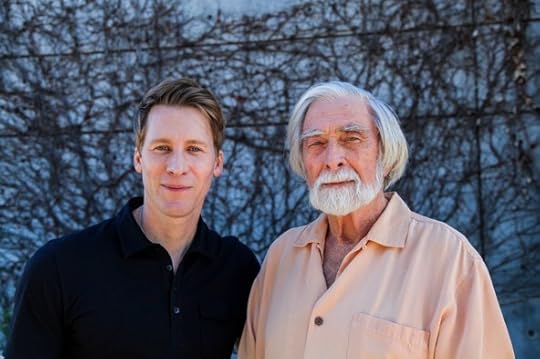 Screenwriter Dustin Lance Black on Risking Career for LGBT Rights
Screenwriter Dustin Lance Black on Risking Career for LGBT Rights
By Robert Scheer
The Academy Award-winning screenwriter talks to Truthdig Editor in Chief Robert Scheer about the risky but necessary decision to pause his career in pursuit of LGBT equality.
 Maj. Danny Sjursen: Dissent Is Patriotic (Audio and Transcript)
Maj. Danny Sjursen: Dissent Is Patriotic (Audio and Transcript)
By Robert Scheer
The columnist and U.S. Army officer tells Truthdig Editor in Chief Robert Scheer that U.S. foreign policy since 9/11 makes us less safe.
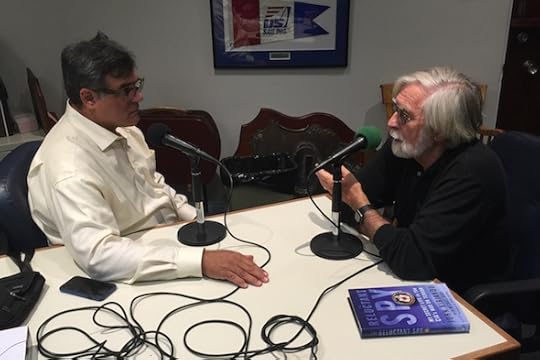 John Kiriakou: Haspel Is the Wrong Woman for the CIA
John Kiriakou: Haspel Is the Wrong Woman for the CIA
By Robert Scheer
Truthdig Editor in Chief Robert Scheer and CIA whistleblower Kiriakou discuss the nomination of Gina Haspel as the spy agency’s director.
 Filmmaker Sara Driver on Jean-Michel Basquiat (Audio and Transcript)
Filmmaker Sara Driver on Jean-Michel Basquiat (Audio and Transcript)
By Robert Scheer
Truthdig’s Robert Scheer discusses the American artist with the director of “Boom for Real: The Late Teenage Years of Jean-Michel Basquiat.”
 Nomi Prins on the Banks That Run the World (Audio and Transcript)
Nomi Prins on the Banks That Run the World (Audio and Transcript)
By Robert Scheer
The author and former banker discusses what Truthdig’s Robert Scheer calls her “most ambitious” book, “Collusion.”
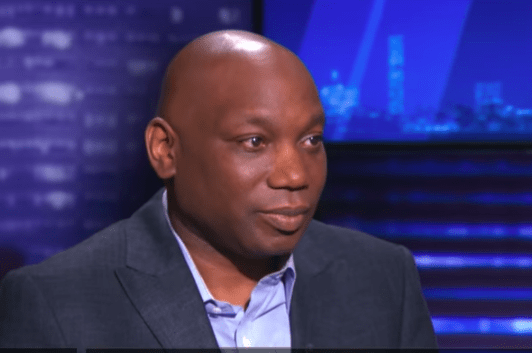 From Ali to LeBron James: Howard Bryant on Revolt of the Black Athlete
From Ali to LeBron James: Howard Bryant on Revolt of the Black Athlete
By Robert Scheer
The acclaimed sports journalist discusses his new book, “The Heritage: Black Athletes, A Divided America, and the Politics of Patriotism.”
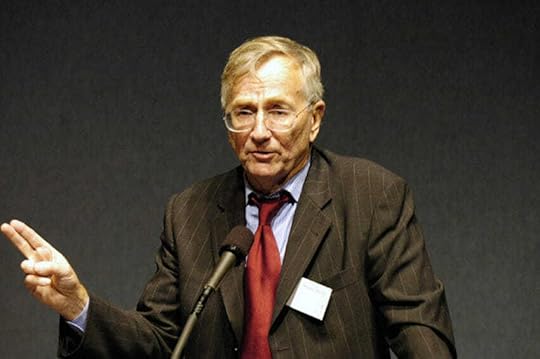 Seymour Hersh on America’s Capacity for Fascist Brutality
Seymour Hersh on America’s Capacity for Fascist Brutality
By Robert Scheer
In a wide-ranging interview, the Pulitzer Prize-winning journalist discusses the My Lai massacre and more.
 Jane Fonda Is a Living, Breathing Rebuke of the Patriarchy
Jane Fonda Is a Living, Breathing Rebuke of the Patriarchy
By Robert Scheer
Director Susan Lacy reflects on the film star’s personal evolution and her sui generis brand of political activism.
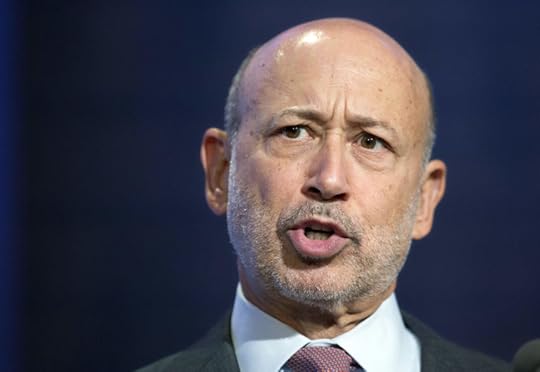 Wall Street’s Corruption Runs Deeper Than You Can Fathom
Wall Street’s Corruption Runs Deeper Than You Can Fathom
By Robert Scheer
Author Carmen Segarra sounds off on Goldman Sachs, deregulation and how our culture rewards bad behavior.
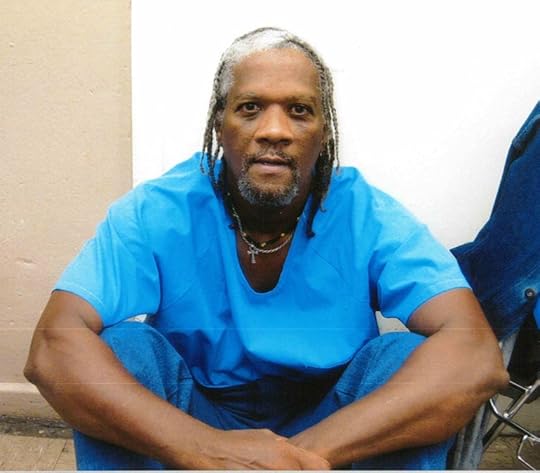 Is California About to Execute an Innocent Man?
Is California About to Execute an Innocent Man?
Robert Scheer with Kevin Cooper
Kevin Cooper reflects on his near-execution, the cowardice of California Democrats and his struggle to stay sane on death row. Part 1 of 2.
 Could Kevin Cooper Finally Be Exonerated?
Could Kevin Cooper Finally Be Exonerated?
Robert Scheer with Kevin Cooper
Efforts by the inmate’s legal team and journalists lead California’s governor to order a re-examination of the case. Part 2 of 2.

Warren Announces Presidential Run, Vows to Fight Corporate Power
In a move seen as an official signal that she is entering the 2020 contest for president, Sen. Elizabeth Warren (D-Mass.) on Monday sent an email to supporters and shared a video on social media announcing that she is forming an exploratory committee to examine her viability as a candidate in the next presidential race.
“Today, corruption is poisoning our democracy,” Warren declares in the video. “Politicians look the other way while big insurance companies deny patients life-saving coverage, while big banks rip off consumers, and while big oil companies destroy this planet. Our government’s supposed to work for all of us, but instead it has become a tool for the wealthy and well-connected.”
Warren recalls her childhood in Oklahoma and working as a public school teacher and law professor before she joined the Senate and fought for the creation of the Consumer Financial Protection Bureau (CFPB) in response to 2007-08 financial crisis. As she notes: “Working families today face a lot tougher path than my family did. And families of color face a path that is steeper and rockier, a path made even harder by the impact of generations of discrimination.”
Vowing to continue challenging the “billionaires and big corporations” as well as the politicians they’ve enlisted to cripple unions, dismantle financial regulations, and push tax cuts for the rich, the senator says: “We can make our democracy work for all of us. We can make our economy work for all of us. We can rebuild America’s middle class—but this time, we gotta build it for everyone.”
Every person in America should be able to work hard, play by the same set of rules, & take care of themselves & the people they love. That’s what I’m fighting for, & that’s why I’m launching an exploratory committee for president. I need you with me: https://t.co/BNl2I1m8OX pic.twitter.com/uXXtp94EvY
— Elizabeth Warren (@ewarren) December 31, 2018
On top of the publicly-released video, Warren sent an email to supporters on Monday morning to announce the exploratory committee, which enables her to fundraise and fill campaign staff positions ahead of formally seeking the presidency.
“I don’t have binders full of bankers and CEOs to call for ginormous checks to launch this committee—in fact, most of them aren’t going to like what I’m doing and will probably spend their money somewhere else. That’s ok by me,” Warren’s email reads. “This has always been a grassroots campaign… Because this isn’t just my fight, it’s our fight.”
Progressives and writers welcomed Warren’s announcement as a positive step for what is expected to be a crowded and competitive field for the Democratic nomination:
Democrats need a #2020 presidential primary driven by bold, inclusive populist ideas and a battle for the support of the New American Majority, and having @ewarren in the race ensures we’ll get one. Happy to hear you’re running for President, Sen. Warren! https://t.co/F25H37cDfl
— Democracy for America (@DFAaction) December 31, 2018
In Just 200 Years, We Reversed This 50-Million-Year Climate Trend
Humankind, in two centuries, has transformed the climate. It has succeeded in reversing a 50-million-year cooling trend.
Scientists conclude that the profligate combustion of fossil fuels could within three decades take planet Earth back to conditions that existed in the Pliocene three million years ago, an era almost ice-free and at least 1.8°C and possibly 3.6°C warmer than today.
But there is a much earlier warming precedent. The Eocene planet at its warmest 50 million years ago was perhaps 13°C warmer than it has been for almost all human history.
Its continents were differently configured, the Arctic was characterised by swampy forests that might have looked a little like the Louisiana bayous of the US, and the first mammals had begun to colonise the globe.
And then, steadily but unevenly, the globe began to cool towards a level comfortable for human evolution, and then much later to a level that permitted the birth of agriculture and the foundation of a civilisation that fostered writing, music, poetry, scholarship and scientific skills capable of tracing the detailed history of the last 50 million years and at the same time projecting a changing future.
“We have gone from expecting climate change to happen, to detecting its effects, and now we are seeing it is causing harm”
“We can use the past as a yardstick to understand the future, which is so different from anything we have experienced in our lifetime,” said John Williams, a palaeo-ecologist at the University of Wisconsin-Madison in the US.
“People have a hard time projecting what the world will be like in five or 10 years from now. This is a tool for predicting that – how we head down those paths, and using deep geologic analogues to think about changes in time.”
Dr Williams and his colleagues report in the Proceedings of the National Academy of Sciences that they compared the climate computer forecasts for the mean summer and winter world temperatures from 2020 to 2280, with historic and prehistoric warm periods over the last 50 million years.
And they identified a hotspot in the mid-Pliocene more than 3 million years ago as the best match for global climates after 2030.
They reason that if nations fulfil the promise made in Paris in 2015 to reduce greenhouse gas emissions and keep average global warming to no more than 1.5°C above the levels for most of human history, then that is what global conditions will be like.
No parallel
If, on the other hand, nations go on burning fossil fuels under the business-as-usual scenario, then by 2150 the world will be very like the early Eocene, 50 million years ago.
And if that is the case, at least 9% of the globe – including northern Australia, east and south-east Asia, and the coastal Americas – will experience what the scientists call “geologically novel climates”: that is, conditions for which the past can offer no match at all.
It is a tenet of geology that the present is key to the past. If so, the past can also illuminate the future: what has happened before can happen again.
In the course of decades of careful study, climate scientists have identified examples of mass extinction and catastrophic climate change from the Cretaceous and the Permian and even the late Carboniferous, when so much carbon dioxide was taken from the atmosphere and buried as fossil plant material that the planet almost became a snowball.
More directly, change in the past has repeatedly provided increasingly urgent warnings for the near future.
Human flourishing ended
So cogent have been the warnings from the distant past that researchers argue that the epoch in which modern humans flourished – geologists call it the Holocene – effectively came to an end midway through the 20th century.
What initially provided a safe operating space for emerging humanity will, they think, become known as the Anthropocene, because human activity has now so dramatically changed the climate, the landscape and the conditions under which other lifeforms flourish.
“The further we move from the Holocene, the greater we move out of safe operating space,” Professor Williams said.
“In the roughly 20 to 25 years I have been working in the field, we have gone from expecting climate change to happen, to detecting its effects, and now we are seeing it is causing harm.
“People are dying, property is being damaged, we’re seeing intensified fires and intensified storms that can be attributed to climate change.”

Chris Hedges's Blog
- Chris Hedges's profile
- 1897 followers




